Usually, searching for an email is quite easy when using Gmail, since you can simply look for it using the search bar in the web version or the smartphone app. However, sometimes, you may find that certain emails are no longer visible and cannot be located in this manner. This can be quite frustrating, especially if you are looking for an email urgently and cannot find it. If you're in such a fix, then here is how you can go about solving the problem.
Solution 1: Perform a basic search
Sometimes, the emails you may be looking for may have been accidentally deleted, marked as spam, or archived. So, before trying out other fixes, you should check your Gmail inbox as well as spam folders thoroughly and make sure they are not present there.
- Open Gmail in your browser and type
in:anywherein the search box, along with information like the subject of the email or the sender's name.

- You will see all relevant emails in the search results. The results may contain the hidden emails you are searching for. Simply click on an email to open it. If you're using the Gmail app, check the 'All Mail' label, which includes both received and sent emails.
- If your missing emails have been deleted, they will remain in the Trash folder for 30 days. After that period, they will be deleted permanently. The same goes for emails in the Spam folder. Also, remember that there is a single copy of each email and once it is deleted from one place, it will be deleted from everywhere.
in: anywhere, and tap on the search icon in the bottom right. Solution 2: Check email filters
Another reason you may not be able to find the emails you are looking for is that you may have created filters to delete or archive certain emails automatically. You can check your email filters by following these steps.
- Open Gmail in a web browser and click on the gear icon at the top right.

- When the Settings dropdown menu appears, click on the 'See all settings' button.
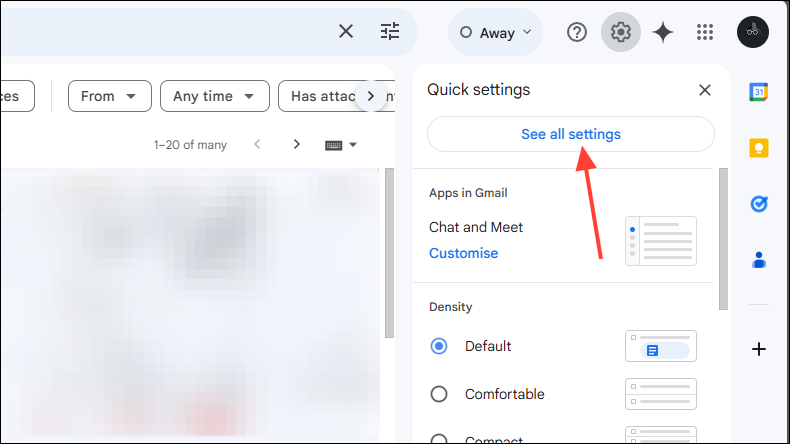
- Now click on the 'Filters and blocked addresses' category at the top.
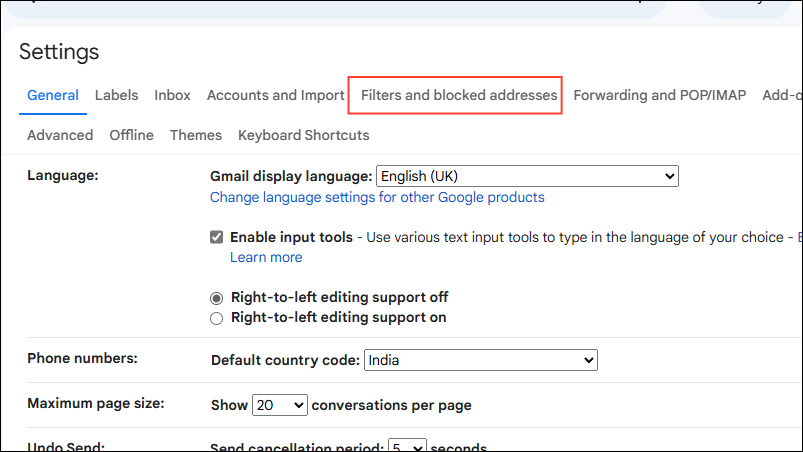
- Check whether you have set up filters with the words 'Skip inbox' or 'Delete it'. If you have, click on the 'Delete' or 'Edit' button on the right and then follow the steps on the screen.
Solution 3: Check email forwarding settings
Gmail lets you choose whether to archive or delete the original emails when you set up email forwarding. You should check the forwarding settings to find out whether your emails are being archived or deleted.
- Open the settings page in Gmail using your web browser.
- Click on the 'Forwarding and POP/IMAP' category at the top.
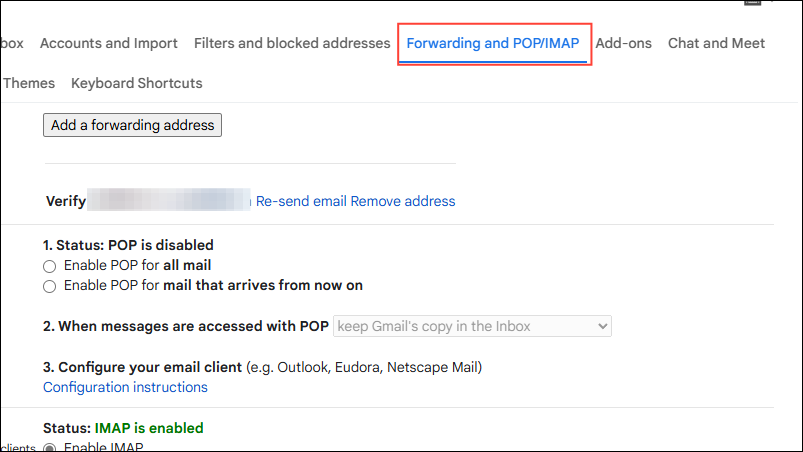
- In the Forwarding section, check whether you have enabled the 'Forward a copy of incoming mail' option. If it is enabled, click on the 'Mark Gmail's copy as read' or 'Keep Gmail's copy in the Inbox'.
- Then click on the 'Save changes' button at the bottom.
Solution 4: Check your email client settings
If you use an email client like Microsoft Outlook or Apple Mail, you should check the type of forwarding you have set up.
For IMAP, web apps, add-ons, and extensions
- When setting up IMAP, you can decide whether any actions you take in your email client also take effect in Gmail. For instance, when you delete an email in Microsoft Outlook, that email will also be deleted from Gmail. Make sure to use recommended IMAP settings in your email client.
- If you're using an add-on, extension, or web app to access Gmail, go to the connected apps and sites webpage.
- Scroll down and click on the 'Your connections to third-party apps and services' section.

- Here, look for any application or service that you don't recognize. Click on it and you will see all the information about the service linked to your Google account.
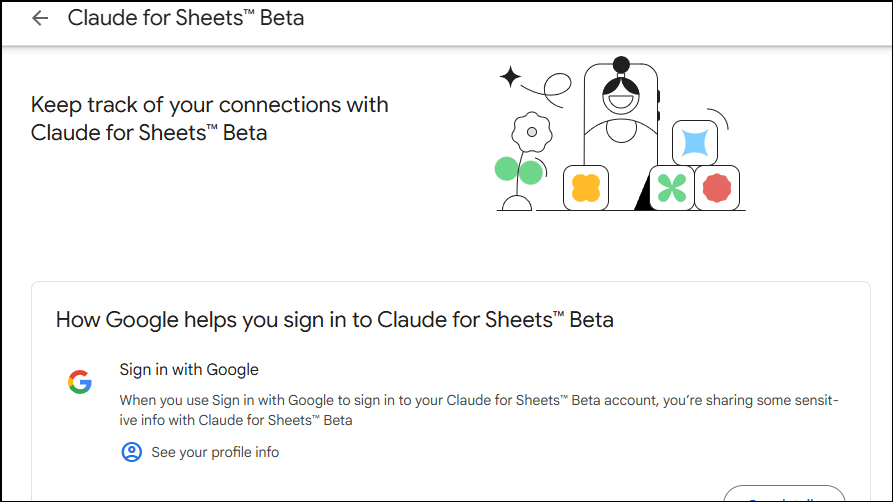
- To remove a service, scroll down and click on 'Delete all connections that you have' option.
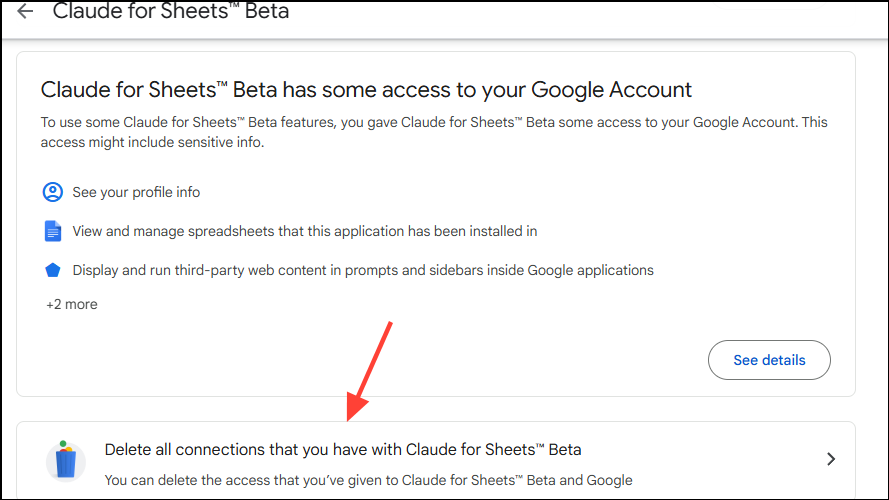
- Then click on 'Confirm' in the pop-up that appears.

For POP
As with IMAP, you can choose whether actions you take in email clients using POP settings can affect Gmail, such as deleting or archiving emails.
- Go to the Forwarding and POP/IMAP Gmail settings page and check that POP is disabled.

- If you see the 'Archive Gmail's copy' or 'Delete Gmail's copy' option, click on the dropdown menu and select 'Keep Gmail's copy in the inbox'.
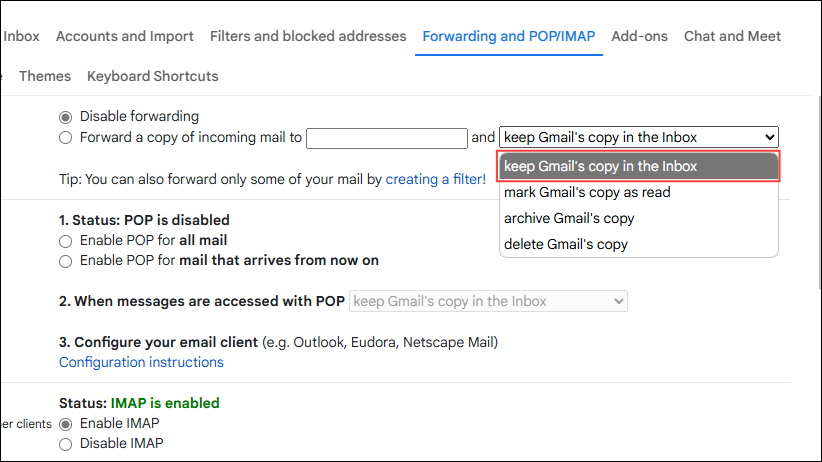
- Scroll to the bottom of the page and click on the 'Save changes' button.

Solution 5: Deselect all categories in Gmail
The Categories feature in Gmail automatically determines which label will be assigned to an email, and when it does so, it moves that email into a different sub-folder from the inbox. When this happens, you may be fooled into thinking that some of your emails are hidden, since they are not directly accessible. To bring those emails back to your inbox,
- Open the Gmail settings page and click on the 'Inbox' category at the top.

- Now, click on the checkboxes for the various categories that appear below on the 'Inbox type' option and deselect them.
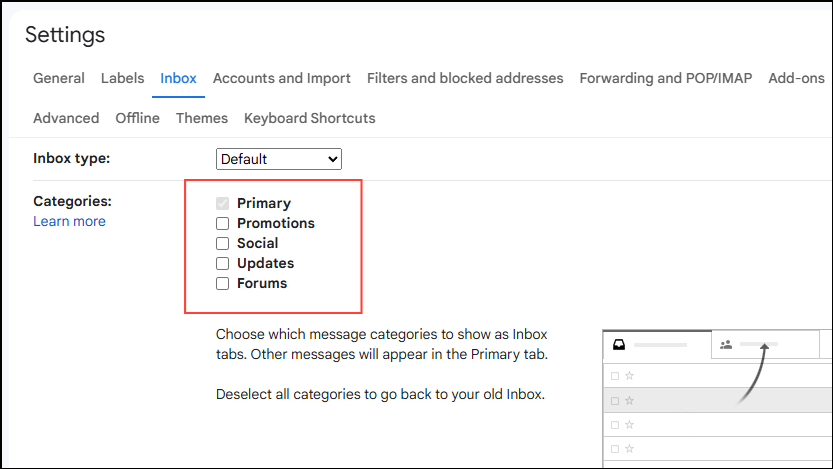
- Then scroll to the bottom of the page and click on the 'Save changes' button.
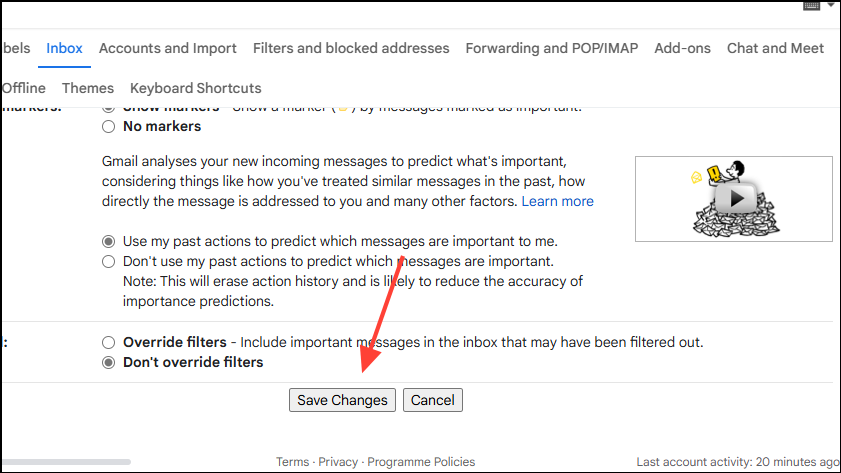
- If you're using the Gmail app, tap on the hamburger menu that appears as three horizontal lines on the top left.
- Then tap on 'Settings' in the menu that appears.
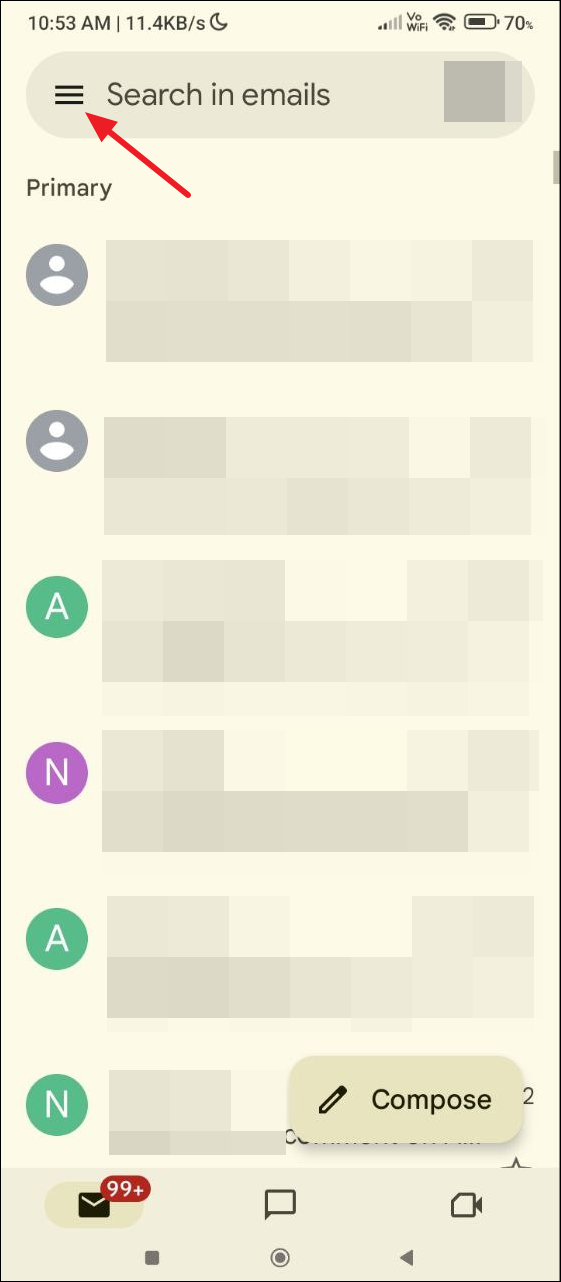

- Next, tap on the email account for which you want to change the settings.
- Now you will see all settings related to the account. Tap on 'Inbox categories'.


- When the Inbox categories appear, tap on the checkbox next to each option to disable it.

Solution 6: Clear cache and cookies
If your browser's cache is corrupted, it can also lead to disappearing email messages in Gmail. To fix this, you need to clear the cache and cookies from the browser settings.
- Open your web browser and click on the three dots on the top right.
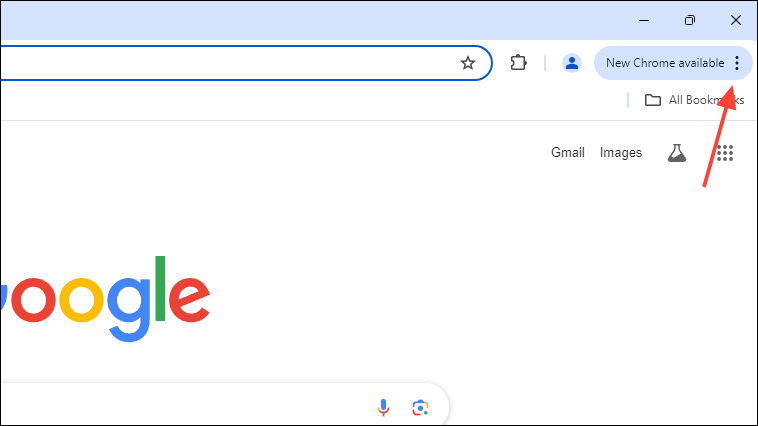
- Then click on 'Settings' in the menu that drops down.
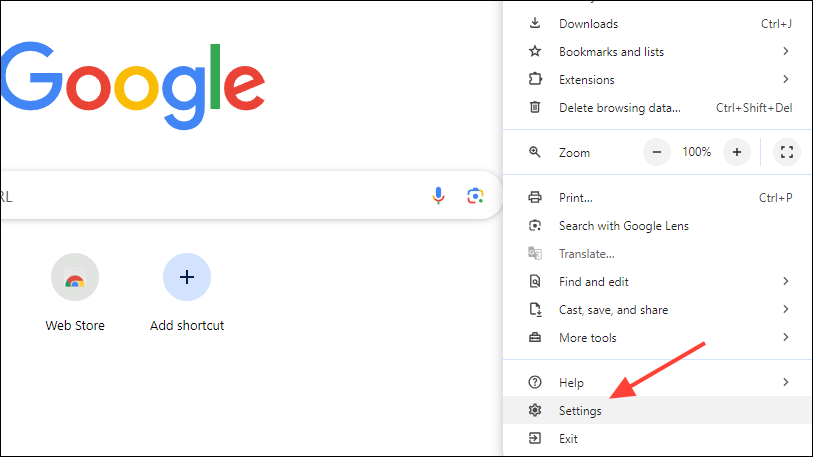
- When the Settings page opens, click on 'Privacy and Security' on the left.
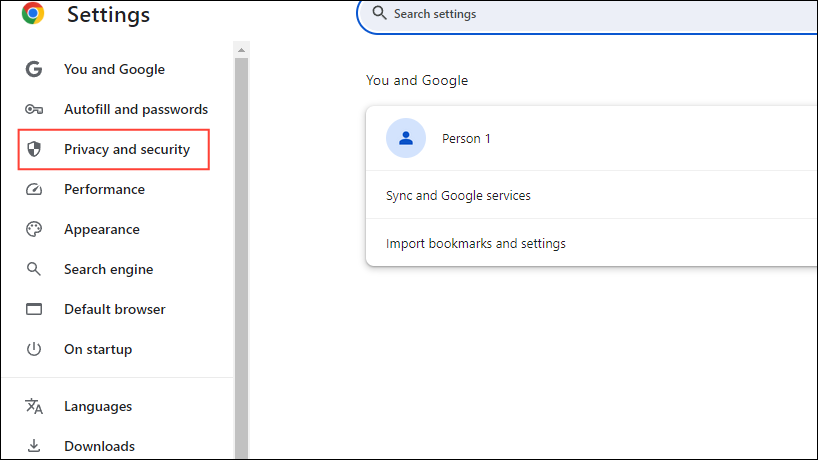
- Now, click on 'Delete browsing data'.
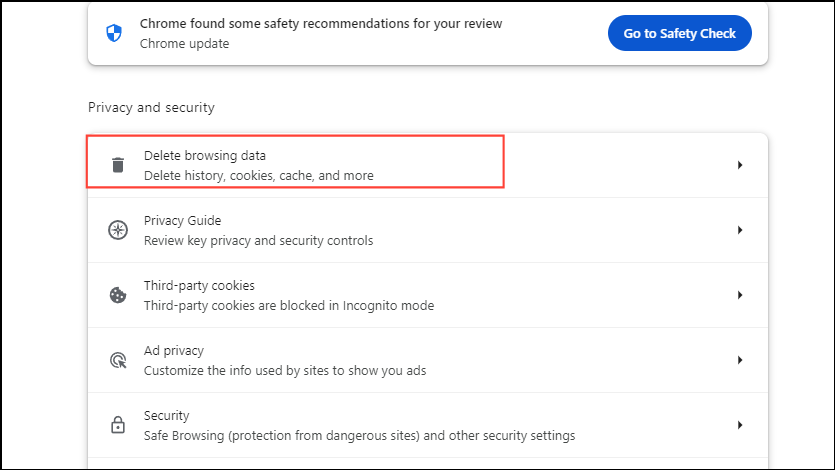
- In the pop-up that appears, click on the checkboxes for the 'Cookies and other site data' and 'Cached images and files' to select them. Then click on the 'Delete data' button.

- After clearing the cache and cookies, check whether your missing Gmail messages are now available.
On mobile
- Open the Settings app and tap on 'Apps'.
- Find Gmail in the list of apps and then tap on it.

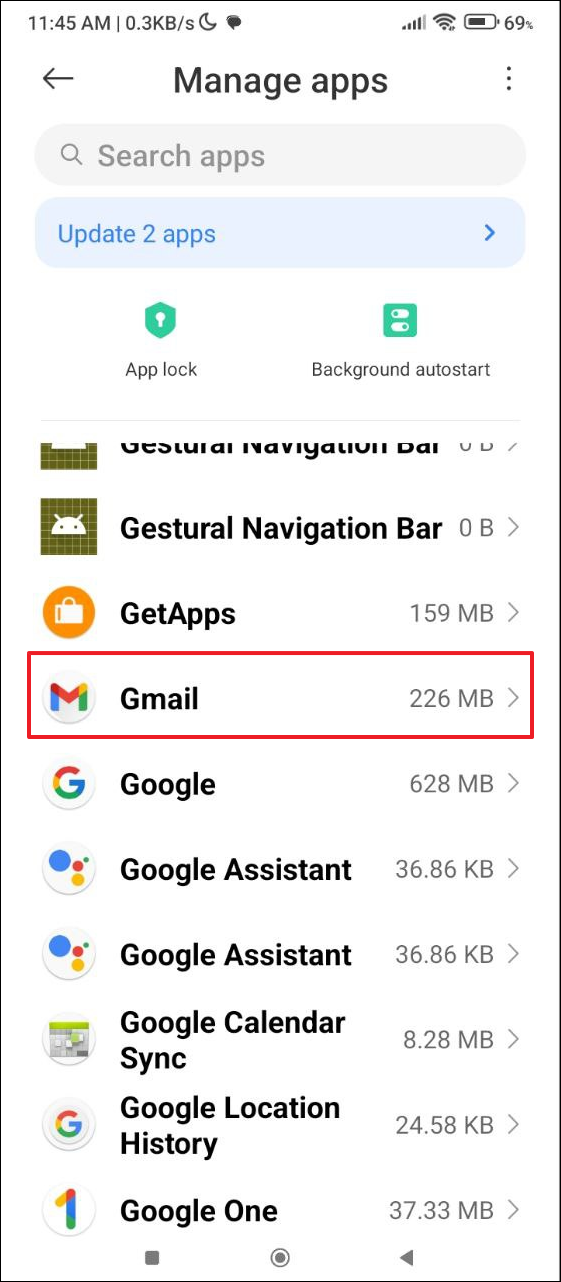
- Then tap on 'Clear data'.
- Finally, tap on the 'Clear cache' option.
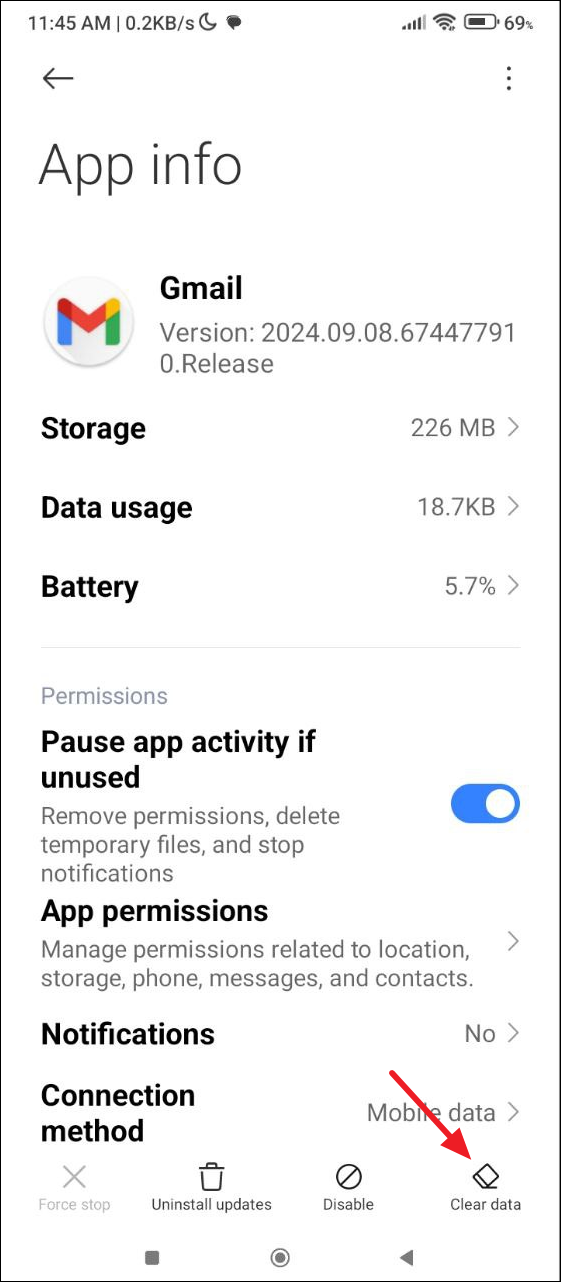
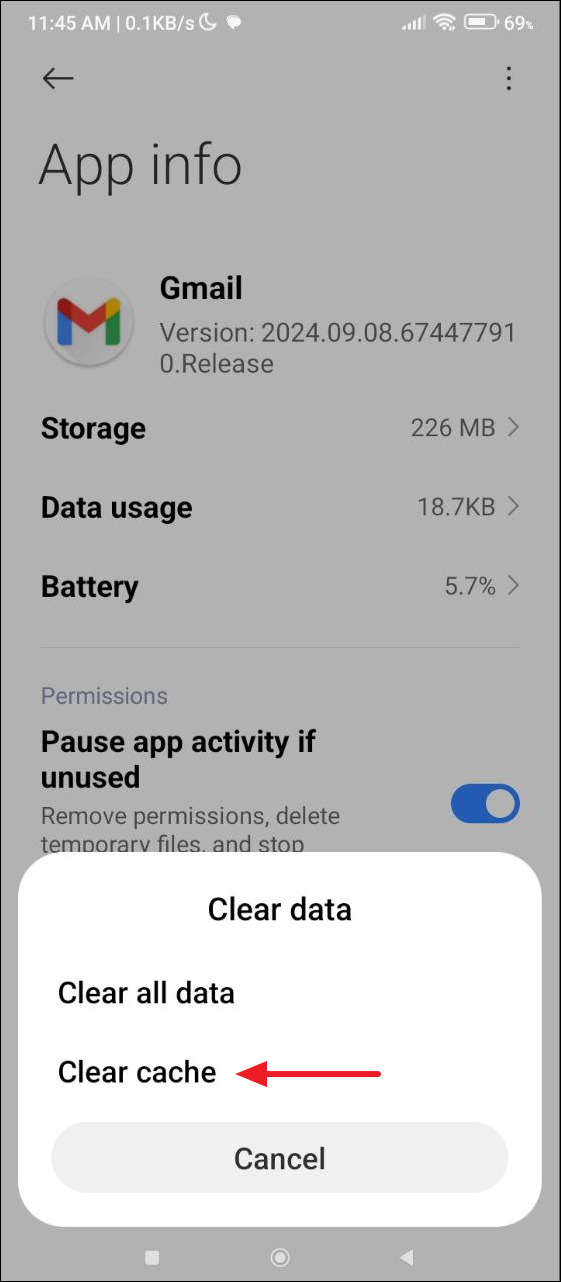
Things to know
- If clearing the browser cache and cookies does not work, you may need to remove and reinstall your browser. However, before doing so, try using another browser and check whether your hidden emails are accessible from there.
- You should also check your third-party email clients and ensure there is no glitch or downtime that is preventing you from getting your emails in Gmail.
- A more serious cause of your emails being hidden in Gmail may be that your account has been hacked. If you think there is a possibility of this, consider changing your password and then enabling two-step verification.
- While this is unlikely, there is always the possibility that you may have exceeded the storage limits offered by your Gmail plan. If that is the case, Google will automatically delete your data if you have exceeded the storage limit, though it will send you alerts and notifications before doing so.
- Google also offers a Gmail Recovery tool, which can help you recover emails that have been permanently deleted. However, it will not work if you are a G Suite user.


